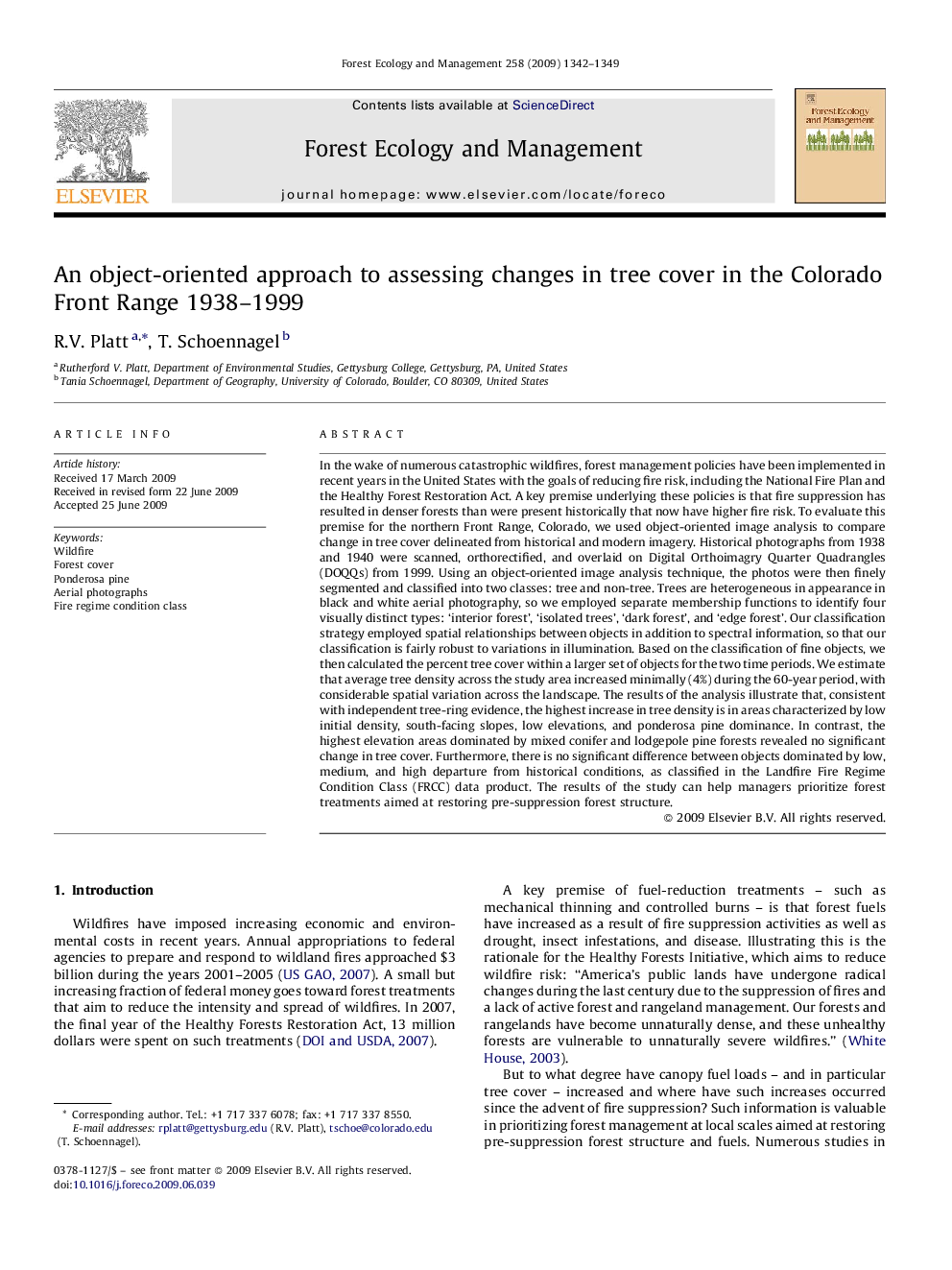| کد مقاله | کد نشریه | سال انتشار | مقاله انگلیسی | نسخه تمام متن |
|---|---|---|---|---|
| 88970 | 159328 | 2009 | 8 صفحه PDF | دانلود رایگان |

In the wake of numerous catastrophic wildfires, forest management policies have been implemented in recent years in the United States with the goals of reducing fire risk, including the National Fire Plan and the Healthy Forest Restoration Act. A key premise underlying these policies is that fire suppression has resulted in denser forests than were present historically that now have higher fire risk. To evaluate this premise for the northern Front Range, Colorado, we used object-oriented image analysis to compare change in tree cover delineated from historical and modern imagery. Historical photographs from 1938 and 1940 were scanned, orthorectified, and overlaid on Digital Orthoimagry Quarter Quadrangles (DOQQs) from 1999. Using an object-oriented image analysis technique, the photos were then finely segmented and classified into two classes: tree and non-tree. Trees are heterogeneous in appearance in black and white aerial photography, so we employed separate membership functions to identify four visually distinct types: ‘interior forest’, ‘isolated trees’, ‘dark forest’, and ‘edge forest’. Our classification strategy employed spatial relationships between objects in addition to spectral information, so that our classification is fairly robust to variations in illumination. Based on the classification of fine objects, we then calculated the percent tree cover within a larger set of objects for the two time periods. We estimate that average tree density across the study area increased minimally (4%) during the 60-year period, with considerable spatial variation across the landscape. The results of the analysis illustrate that, consistent with independent tree-ring evidence, the highest increase in tree density is in areas characterized by low initial density, south-facing slopes, low elevations, and ponderosa pine dominance. In contrast, the highest elevation areas dominated by mixed conifer and lodgepole pine forests revealed no significant change in tree cover. Furthermore, there is no significant difference between objects dominated by low, medium, and high departure from historical conditions, as classified in the Landfire Fire Regime Condition Class (FRCC) data product. The results of the study can help managers prioritize forest treatments aimed at restoring pre-suppression forest structure.
Journal: Forest Ecology and Management - Volume 258, Issue 7, 15 September 2009, Pages 1342–1349